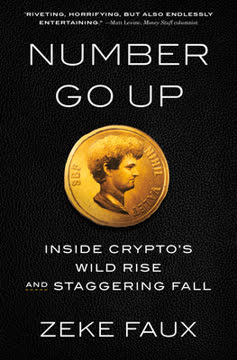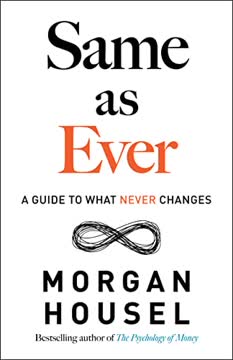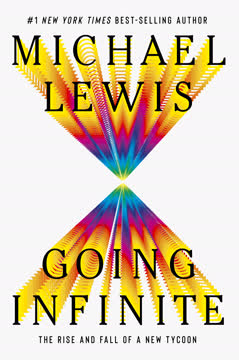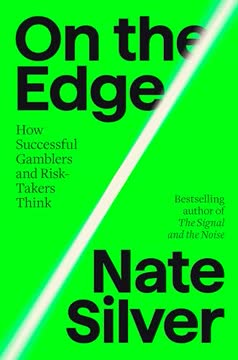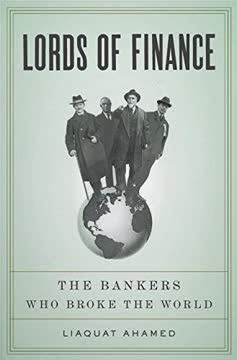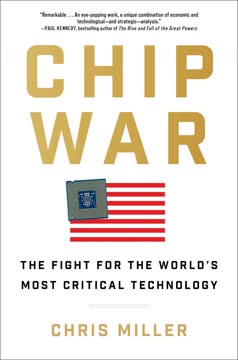मुख्य निष्कर्ष
1. पैसा एक साझा कल्पना है, कोई ठंडी गणितीय सच्चाई नहीं
पैसा एक बनाई हुई चीज़ है, एक साझा कल्पना। पैसा मूलतः, अपरिवर्तनीय रूप से सामाजिक है।
सामाजिक निर्माण: पैसा केवल इसलिए मूल्यवान है क्योंकि हम सब मिलकर इसे मूल्य देते हैं। यह भोजन या आश्रय की तरह स्वाभाविक रूप से मूल्यवान नहीं है। यह साझा विश्वास हमें पैसे को विनिमय के माध्यम, मूल्य के भंडार और लेखांकन की इकाई के रूप में उपयोग करने की अनुमति देता है।
ऐतिहासिक विकास: इतिहास में पैसा कई रूपों में रहा है, जैसे कौड़ी के खोल, धातु के सिक्के, कागज़ के नोट और डिजिटल मुद्राएं। हर बदलाव ने इस बात में सामूहिक सोच को बदला कि "पैसा" क्या है।
भरोसा है मुख्य: पैसे की प्रभावशीलता निर्भर करती है जारी करने वाले प्राधिकरण (जैसे सरकार, केंद्रीय बैंक) और व्यापक आर्थिक प्रणाली पर भरोसे पर। जब भरोसा टूटता है, जैसे अतिमहंगाई या वित्तीय संकट के दौरान, पैसा जल्दी से अपनी मूल्यवान छवि खो सकता है।
2. पैसे की उत्पत्ति जटिल, हिंसक और मानवीय संबंधों से जुड़ी है
विवाह और हत्या इसका हिस्सा हैं। लेखन की खोज भी।
बार्टर से परे: पैसे के बार्टर से उत्पन्न होने की पारंपरिक कहानी ज्यादातर मिथक है। वास्तव में, पैसा जटिल सामाजिक संबंधों, धार्मिक कर्तव्यों और ऋण-क्रेडिट प्रणालियों से विकसित हुआ।
प्रारंभिक रूप:
- उपहार अर्थव्यवस्थाएं: समाज जो पारस्परिक उपहार देने और कर्तव्यों पर आधारित थे
- टैली स्टिक्स: लकड़ी की छड़ों पर कटौती करके ऋणों का रिकॉर्ड रखना
- मंदिर अर्थव्यवस्थाएं: धार्मिक संस्थान जो आर्थिक गतिविधि का प्रबंधन करते थे
लेखन और लेखांकन: सबसे पहले लेखन के रूप आर्थिक लेन-देन, ऋण और सूची को रिकॉर्ड करने के लिए विकसित हुए। यह पैसे, रिकॉर्ड रखने और सभ्यता के विकास के बीच गहरे संबंध को दर्शाता है।
3. कागज़ का पैसा अर्थव्यवस्थाओं में क्रांति लाया लेकिन विरोध और असफलताओं का सामना किया
लोगों ने इस अवधारणा का दुरुपयोग किया, फंड में बेकार चीजें डालकर लाभ पाने की कोशिश की।
चीनी नवाचार: कागज़ का पैसा सबसे पहले चीन में विकसित हुआ, जिससे व्यापार और आर्थिक विस्तार आसान हुआ। लेकिन इससे अतिमहंगाई के दौर भी आए जब सरकारों ने बहुत अधिक नोट छापे।
यूरोपीय अपनाना: यूरोप में कागज़ के पैसे को संदेह की नज़र से देखा गया, लेकिन धीरे-धीरे इसे स्वीकार किया गया:
- गोल्डस्मिथ के रसीदें बैंकनोट्स में बदलीं
- केंद्रीय बैंकों का निर्माण जो कागज़ मुद्रा का प्रबंधन करते थे
- सार्वजनिक भरोसा बनाए रखने और नकली नोटों को रोकने के संघर्ष
बूम और बस्ट चक्र: कागज़ मुद्रा से पैसे बनाना आसान होने से आर्थिक उछाल आए लेकिन साथ ही विनाशकारी पतन भी हुए, जैसे फ्रांस में मिसिसिपी बबल।
4. स्वर्ण मानक की कठोरता ने आर्थिक आपदाओं को जन्म दिया
स्वर्ण मानक ने देशों को एक भयानक आर्थिक चक्र में फंसा दिया। सोने से संबंध तोड़ने ने चक्र को तोड़ दिया।
मानी गई स्थिरता: स्वर्ण मानक को मौद्रिक स्थिरता और सरकार के अधिक खर्च पर नियंत्रण के रूप में देखा जाता था। देशों ने अपनी मुद्रा का मूल्य सोने की एक निश्चित मात्रा से जोड़ा।
मंदी के दबाव: आर्थिक मंदी के दौरान, स्वर्ण मानक ने देशों को अपनी मुद्रा आपूर्ति बढ़ाने से रोका, जिससे मंदी और गहरी हो गई।
महामंदी का कारण: स्वर्ण मानक की सीमाओं ने 1929 के क्रैश के दौरान नीति निर्माताओं की प्रतिक्रिया क्षमता को गंभीर रूप से सीमित किया, जिससे महामंदी लंबी और गहरी हुई। जिन्होंने स्वर्ण मानक को जल्दी छोड़ा, वे तेजी से उबर पाए।
5. केंद्रीय बैंक महत्वपूर्ण लेकिन विवादास्पद आर्थिक स्थिरीकरणकर्ता के रूप में उभरे
वित्त का सार है समय यात्रा। बचत वर्तमान से भविष्य में संसाधन ले जाने के बारे में है; वित्तपोषण भविष्य से वर्तमान में संसाधन लाने के बारे में।
भूमिका का विकास:
- निजी बैंकों से जो सरकारों की सेवा करते थे, सार्वजनिक संस्थानों तक जो मौद्रिक नीति का प्रबंधन करते हैं
- वित्तीय संकट के दौरान अंतिम उधारदाता
- मुद्रा आपूर्ति और ब्याज दरों के नियंत्रक
संतुलन की कला: केंद्रीय बैंकों को विभिन्न दबावों के बीच संतुलन बनाना होता है:
- मूल्य स्थिरता बनाए रखना बनाम आर्थिक विकास को बढ़ावा देना
- राजनीतिक हस्तक्षेप से स्वतंत्रता बनाम जनता के प्रति जवाबदेही
- राष्ट्रीय हित बनाम अंतरराष्ट्रीय सहयोग
आलोचनाएं: केंद्रीय बैंकों पर आरोप लगते हैं कि वे:
- सरकार के अधिक खर्च को सक्षम बनाते हैं
- वित्तीय अभिजात वर्ग को आम नागरिकों पर प्राथमिकता देते हैं
- मौद्रिक नीति के माध्यम से बूम-बस्ट चक्र पैदा करते हैं
6. तकनीकी प्रगति ने पैसे और वित्तीय उपकरणों के नए रूप बनाए
छाया बैंकिंग और उससे बनी छाया मुद्रा ने दशकों तक कोई लागत न चुकाकर सुरक्षा जाल हासिल कर लिया। छाया मुद्रा अब असली मुद्रा बन गई।
इलेक्ट्रॉनिक भुगतान: क्रेडिट कार्ड, ऑनलाइन बैंकिंग और मोबाइल भुगतान के उदय ने पैसे के उपयोग और सोच को पूरी तरह बदल दिया है।
वित्तीय नवाचार:
- मनी मार्केट फंड: बचत और निवेश के बीच की सीमा को धुंधला करना
- डेरिवेटिव्स: जटिल वित्तीय उपकरण जो अंतर्निहित संपत्तियों पर आधारित हैं
- सिक्यूरिटाइजेशन: ऋणों को बंडल करके व्यापार योग्य प्रतिभूतियों के रूप में बेचना
छाया बैंकिंग: गैर-बैंक वित्तीय संस्थान बैंक जैसी सेवाएं देने लगे बिना समान नियमों के, जिसने 2008 के वित्तीय संकट में योगदान दिया।
7. बिटकॉइन और क्रिप्टोकरेंसी पारंपरिक पैसे और बैंकिंग की धारणाओं को चुनौती देती हैं
बिटकॉइन का मकसद है कि कोई भी इसका प्रभारी नहीं है। (आप कह सकते हैं कि हर कोई प्रभारी है, लेकिन इसका मतलब एक ही है।)
विकेंद्रीकरण: बिटकॉइन बिना किसी केंद्रीय प्राधिकरण के काम करता है, ब्लॉकचेन तकनीक का उपयोग करके लेन-देन सत्यापित करता है और नए यूनिट बनाता है।
मुख्य विशेषताएं:
- सीमित आपूर्ति: केवल 21 मिलियन बिटकॉइन ही कभी होंगे
- छद्मनामिता: लेन-देन सार्वजनिक रूप से रिकॉर्ड होते हैं लेकिन वास्तविक पहचान नहीं होती
- सीमा रहित: इसे दुनिया में कहीं भी बिना मध्यस्थ के भेजा जा सकता है
चुनौतियां:
- मूल्य अस्थिरता इसे स्थिर मुद्रा के रूप में उपयोग करना कठिन बनाती है
- स्केलेबिलिटी समस्याएं लेन-देन की गति सीमित करती हैं
- माइनिंग की ऊर्जा खपत पर्यावरणीय चिंताएं बढ़ाती है
8. पैसे का भविष्य नकदी के गायब होने या बैंकिंग में क्रांतिकारी सुधारों से जुड़ा हो सकता है
नकदी मर रही है। इसलिए बिटबक्स, ई-कैश, नेटचेक्स, साइबरकैश, नेटबिल्स और डिजिकैश आ रहे हैं, पेटेंट और ट्रेडमार्क कार्यालय से होकर बाजार में।
नकद रहित समाज: कई देश डिजिटल भुगतान की ओर बढ़ रहे हैं, कुछ (जैसे स्वीडन) लगभग नकदी का उपयोग समाप्त कर चुके हैं।
संभावित सुधार:
- केंद्रीय बैंक डिजिटल मुद्राएं: सरकार द्वारा जारी डिजिटल पैसा
- पूर्ण आरक्षित बैंकिंग: पैसे के भंडारण को उधार देने से अलग करना
- आधुनिक मौद्रिक सिद्धांत: सरकारी खर्च और मौद्रिक नीति पर पुनर्विचार
विचारणीय बातें:
- पूरी तरह डिजिटल पैसे की प्रणाली में गोपनीयता की चिंता
- बिना बैंक वाले लोगों के लिए वित्तीय समावेशन
- नवाचार के साथ वित्तीय स्थिरता और उपभोक्ता संरक्षण का संतुलन
अंतिम अपडेट:
FAQ
What's "Money: The True Story of a Made-Up Thing" about?
- Exploration of Money's Nature: The book delves into the concept of money as a social construct, a shared fiction that has evolved over time.
- Historical Perspective: It traces the history of money from ancient barter systems to modern digital currencies, highlighting key transformations.
- Economic and Social Impact: The narrative examines how money has influenced economies, societies, and individual lives throughout history.
- Author's Journey: Jacob Goldstein shares his personal journey of understanding money, inspired by his experiences as a journalist and conversations with experts.
Why should I read "Money: The True Story of a Made-Up Thing"?
- Comprehensive Overview: The book provides a thorough understanding of the evolution of money, making it accessible to readers with varying levels of economic knowledge.
- Engaging Storytelling: Goldstein uses anecdotes and historical stories to make complex economic concepts relatable and interesting.
- Relevance to Modern Times: It connects historical developments to current financial systems, offering insights into contemporary economic issues.
- Thought-Provoking Ideas: The book challenges readers to rethink their perceptions of money and its role in society.
What are the key takeaways of "Money: The True Story of a Made-Up Thing"?
- Money as a Social Construct: Money is not a fixed entity but a shared belief that has changed over time based on societal needs and technological advancements.
- Historical Evolution: From barter to digital currencies, money has undergone significant transformations that reflect broader economic and social changes.
- Role of Trust: Trust is fundamental to the functioning of money, whether in the form of coins, paper, or digital transactions.
- Future of Money: The book suggests that money will continue to evolve, influenced by technological innovations and changing societal values.
How does Jacob Goldstein define money in "Money: The True Story of a Made-Up Thing"?
- Shared Fiction: Goldstein describes money as a shared fiction, a concept that exists because people collectively agree on its value.
- Social and Economic Tool: Money is a tool that facilitates trade, investment, and economic growth, but it is also deeply intertwined with social structures.
- Dynamic and Evolving: Money is not static; it has evolved from physical objects like cowrie shells to digital currencies, adapting to the needs of society.
- Trust-Based System: The value and functionality of money rely heavily on trust among individuals, institutions, and governments.
What are the best quotes from "Money: The True Story of a Made-Up Thing" and what do they mean?
- "Money is fiction": This quote encapsulates the idea that money's value is based on collective belief rather than intrinsic worth.
- "The essence of finance is time travel": This highlights how financial systems allow for the movement of resources across time, enabling investment and growth.
- "Money is fundamentally, unalterably social": It emphasizes that money is deeply connected to human relationships and societal structures.
- "Economic growth and technological change aren’t guaranteed to continue forever": This serves as a cautionary reminder that economic progress is not inevitable and requires careful management.
How does "Money: The True Story of a Made-Up Thing" explain the evolution of money?
- From Barter to Coins: The book starts with the transition from barter systems to the use of coins, which standardized trade and value.
- Introduction of Paper Money: It covers the invention of paper money in China and its eventual adoption in Europe, revolutionizing trade and finance.
- Rise of Banking Systems: The development of banks and the creation of credit systems are explored as pivotal moments in monetary history.
- Digital and Cryptocurrencies: The narrative concludes with the emergence of digital currencies and blockchain technology, highlighting ongoing changes in how money is perceived and used.
What role does trust play in the concept of money according to Jacob Goldstein?
- Foundation of Value: Trust is the foundation upon which the value of money is built; without it, money would lose its meaning and function.
- Facilitates Transactions: Trust allows people to engage in transactions with confidence, knowing that money will be accepted and honored.
- Institutional Trust: Trust in financial institutions and governments is crucial for maintaining stable monetary systems and preventing crises.
- Challenges in Digital Age: The book discusses how trust is being redefined in the digital age, with cryptocurrencies challenging traditional trust-based systems.
How does "Money: The True Story of a Made-Up Thing" address the future of money?
- Technological Influence: The book suggests that technology will continue to shape the future of money, with digital currencies and blockchain playing significant roles.
- Potential for Change: It highlights the potential for radical changes in monetary systems, driven by innovations and shifts in societal values.
- Challenges Ahead: The narrative acknowledges challenges such as privacy concerns, regulatory issues, and the need for new forms of trust.
- Uncertain Trajectory: While the future of money is uncertain, the book emphasizes the importance of understanding its history to navigate upcoming changes.
What historical examples does Jacob Goldstein use to illustrate the evolution of money?
- Mademoiselle Zélie's Concert: An anecdote about a French singer paid in pigs and coconuts illustrates the limitations of barter systems.
- Lydian Coins: The invention of coins in Lydia is used to show the transition from barter to standardized currency.
- Chinese Paper Money: The development of paper money in China highlights a major innovation in the history of money.
- John Law's System: The story of John Law's financial experiments in France serves as an example of early banking and monetary policy.
How does "Money: The True Story of a Made-Up Thing" connect historical monetary systems to modern financial issues?
- Lessons from the Past: The book draws parallels between historical monetary crises and contemporary financial challenges, emphasizing recurring themes.
- Evolution of Banking: It traces the development of banking systems from early goldsmiths to modern central banks, highlighting ongoing issues of trust and regulation.
- Impact of Technology: The narrative connects past innovations like paper money to current developments in digital currencies and blockchain technology.
- Societal Implications: By examining the social and economic impacts of historical monetary systems, the book provides insights into current debates about money and finance.
What insights does Jacob Goldstein offer about digital currencies in "Money: The True Story of a Made-Up Thing"?
- Potential for Disruption: Digital currencies have the potential to disrupt traditional financial systems by offering new forms of money and payment methods.
- Challenges of Adoption: The book discusses the challenges digital currencies face, including regulatory hurdles, security concerns, and the need for widespread acceptance.
- Trust and Decentralization: It explores how digital currencies aim to create trust through decentralized systems, reducing reliance on traditional financial institutions.
- Future Prospects: While acknowledging uncertainties, the book suggests that digital currencies could play a significant role in the future of money, reshaping how transactions are conducted.
How does "Money: The True Story of a Made-Up Thing" challenge traditional views of money?
- Questioning Intrinsic Value: The book challenges the notion that money has intrinsic value, emphasizing its nature as a social construct.
- Rethinking Stability: It questions the stability of traditional monetary systems, highlighting historical instances of failure and crisis.
- Embracing Change: The narrative encourages readers to embrace change and innovation in monetary systems, rather than clinging to outdated models.
- Broader Perspective: By providing a historical and global perspective, the book invites readers to reconsider their assumptions about what money is and how it should function.
समीक्षाएं
मनी: एक कल्पित वस्तु की सच्ची कहानी को पैसे और वित्त के इतिहास पर एक रोचक और सहज समझ आने वाली पुस्तक के रूप में सराहा गया है। पाठक गोल्डस्टीन की संवादात्मक शैली और जटिल अवधारणाओं को सरलता से समझाने की क्षमता की प्रशंसा करते हैं। यह पुस्तक प्राचीन मुद्रा से लेकर आधुनिक क्रिप्टोकरेंसी तक के विषयों को समेटे हुए है, साथ ही मौद्रिक नीति और आर्थिक प्रणालियों की गहरी समझ प्रदान करती है। हालांकि कुछ लोग इसे गहराई में कम पाते हैं, फिर भी अधिकांश इसके मनोरंजक अंदाज और ऐतिहासिक किस्सों का आनंद लेते हैं। आलोचक कभी-कभी इसकी अतिसरलीकरण और पक्षपात की ओर इशारा करते हैं, लेकिन कुल मिलाकर, यह विषय में नए लोगों के लिए एक जानकारीपूर्ण परिचय के रूप में अनुशंसित है।
Similar Books
